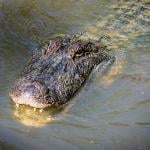1889 is the crossroads where the descendants, living persons and ancestors of previous, current and future influencers meet on the chronological timeline of earth’s history. The descendents of George Washington were alive at the same time as the ancestors of Donald Trump. The grand children of famous americans and explorers were alive at the same time as Michael Jackson’s great grand-parents. In this edition of Notable People Alive In 1889 here is a link to the descendents of some famous and influential people, mostly American trailsetters, whose kin were still alive the year Charlie Chaplin and Hitler were born. Some of them on their last line of the generation. You’ll also see the joining of a french dictator’s family and a signer of the declaration of independence.
Note: Wikipedia is the source the Catholic Bard quotes directly for all the bio descriptions read in these articles.
This article is part of a series of
Francis Scott Key’s Daughter
Francis Scott Key
(August 1, 1779 – January 11, 1843)

He was an American lawyer, author, and poet from Frederick, Maryland, best known as the author of the text of the American national anthem “The Star-Spangled Banner“. Key observed the British bombardment of Fort McHenry in 1814 during the War of 1812. He was inspired upon seeing the American flag still flying over the fort at dawn and wrote the poem “Defence of Fort M’Henry”; it was published within a week with the suggested tune of the popular song “To Anacreon in Heaven“. The song with Key’s lyrics became known as “The Star-Spangled Banner” and slowly gained in popularity as an unofficial anthem, finally achieving official status as the national anthem more than a century later under President Herbert Hoover.
Key was a lawyer in Maryland and Washington, D.C. for four decades and worked on important cases, including the Burr conspiracy trial, and he argued numerous times before the Supreme Court. He was nominated for District Attorney for the District of Columbia by President Andrew Jackson, where he served from 1833 to 1841. He was a devout Episcopalian.
Key owned slaves from 1800, during which time abolitionists ridiculed his words, claiming that America was more like the “Land of the Free and Home of the Oppressed”. As District Attorney, he suppressed abolitionists, and he lost a case against Reuben Crandall in 1836 where he accused the defendant’s abolitionist publications of instigating slaves to rebel. He was also a leader of the American Colonization Society which sent former slaves to Africa. He freed some of his slaves in the 1830s, paying one as his farm foreman to supervise his other slaves. He publicly criticized slavery and gave free legal representation to some slaves seeking freedom, but he also represented owners of runaway slaves. He had eight slaves at the time of his death.
Elizabeth Phoebe Key Howard
(1803-1897)

Descendent of
Betsy Ross
She was an American upholsterer who was credited by her relatives in 1870 with making the second official U.S. flag, accordingly known as the Betsy Ross flag.
John Claypool (August 15, 1752 – August 03, 1817 (64)
+ Betsy Ross (January 1, 1752 – January 30, 1836) (Grandmother)
= Clarissa Sidney Wilson April 03, 1785 – July 10, 1864 (Daughter)
Jacob Wilson (1781 – 1812) + Clarissa Sidney Wilson =
Sophia Berg Hildebrant (Wilson) January 23, 1806 – May 08, 1891 (85) (Granddaughter)

Descendants of Johnny Appleseed
Johnny Appleseed
[born Johnathan Chapman]
September 26, 1774 – March 18, 1845)
He was an American pioneer nurseryman who introduced trees grown with apple seeds (as opposed to trees grown with grafting[1]) to large parts of Pennsylvania, Ohio, Indiana, Illinois, and Ontario, as well as the northern counties of West Virginia. He became an American legend while still alive, due to his kind, generous ways, his leadership in conservation, and the symbolic importance that he attributed to apples. He was also a missionary for The New Church[2] and the inspiration for many museums and historical sites such as the Johnny Appleseed Museum in Urbana, Ohio.

Johnny is the brother of
Elizabeth Rudd (Chapman) (1770 – 1837) is the mother of
Mary Eliza Dix (Rudd) (1808 – 1889) is the mother of
Hon Roscoe Dexter Dix (1839 – 1912)
Decendents of
Ben Franklin
He was an American polymath: a leading writer, scientist, inventor, statesman, diplomat, printer, publisher and political philosopher. Among the most influential intellectuals of his time, Franklin was one of the Founding Fathers of the United States; a drafter and signer of the Declaration of Independence; and the first postmaster general.
Benjamin Franklin (January 17, 1706 – April 17, 1790) (84) Signer of the “Declaration of Independence (Grandfather)
+ Deborah Franklin (February 14, 1708 – December 19, 1774) (66)
= Sarah “Sally” Bache (Franklin) (September 11, 1743 – October 05, 1808) (65)
Sarah + Richard Bache, Sr. (September 12, 1737 – July 29, 1811) (73 ) 2nd US Postmaster General (Daughter)
= Richard Franklin Bache, Jr. (March 11, 1784 – March 17, 1848 (64)
Richard + Sophia Burrell Bache (1784 – 1860) (71-80)
= the Great-granddaughter of Benjamin Franklin , Sophia Arabella Irwin (Bache) (November 14, 1815 – Death: March 24, 1904) (88)
She was the Wife of Pittsburgh Mayor and United States Congressman William Wallace Irwin (1803 – September 15, 1856).
She was also a niece of George Mifflin Dallas, the 11th Vice President of the United States, serving under James K. Polk.
When she died in 1904, she was the last survivor of the 42 great-grandchildren of Benjamin Franklin.

Descendant of
Davy Crockett
He was an American folk hero, frontiersman, soldier, and politician. He is often referred to in popular culture as the “King of the Wild Frontier”. He represented Tennessee in the U.S. House of Representatives and served in the Texas Revolution.
Davy Crockett (August 17, 1786 – March 6, 1836)
+ Elizabeth Patton (1788–1860)
= Robert Patton Crockett (1816–1889)
= Rebecca Elvira Crockett (1818–1879)
= Matilda Crockett (1821–1890)

Moses Hay’s Family Tree
Moses Michael Hays
(March 9, 1739 – May 9, 1805)
He was an American banker, merchant, and philanthropist. As Boston’s most prominent 18th-century Jewish citizen, Moses Michael Hays set a high standard for civic leadership and charity.
He helped establish the New England Masonic movement and was elected as Grand Master in 1792 with Paul Revere as his deputy.
Moses is the father of
Judith Moses Myers (Hays) (1767-1844) is the mother of
Gustavus Adolphus Myers (1801-1869) is the father of
Richard Gustavus Forrester (1823-1891) is the father of
Richard Gill Forrester (1847-1909)

John Fitch’s Decedents
John Fitch (inventor)
(January 21, 1743 – July 2, 1798)
He was an American inventor, clockmaker, entrepreneur, and engineer. He was most famous for operating the first steamboat service in the United States. The first boat, 45 feet long, was tested on the Delaware River by Fitch and his design assistant Steven Pagano.
He was the Father of
Shaler Fitch (1768-1842) who was the father of
John Benjamin Fitch Sr (1797-1861) who was the father of
John Benjamin Fitch Jr (1828-1894)
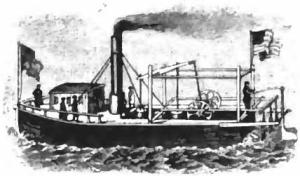
Descendants of
The Carrols and Bonapartes
Charles Carroll (1828 – 1895) and Napoleon (1830–1893) were both Alive and Possibly Well in 1889 and also part of the same family.
This is not the same Charles Carroll (1737–1832) who signed the Declaration of Independence and the same Napoleon Bonaparte (August 15, 1769 – May 5, 1821) who tried to conquer the world at the beginning of the 19th century but their descendants.
Charles had some very significant cousins.
Daniel Carroll II (1730–1796), was one of five men to sign both the Articles of Confederation (1778) and the US Constitution (1787).

Daniel’s younger brother John Carroll (archbishop) SJ (January 8, 1735 – December 3, 1815) was an American prelate of the Catholic Church who served as the first bishop of the Diocese of Baltimore, the first diocese in the new United States. He later became the first archbishop of Baltimore. Until 1808, Carroll administered the entire American Catholic Church. He is also the founder of Georgetown University

Daniel and John’s cousin, Charles Carroll (1737–1832) was the last surviving signer and the longest surviving, dying 56 years after the signing of the Declaration of Independence (1776). He was also the only Catholic signatory of the Declaration. He participated in the 1828 setting of the “first stone” in the construction of the Baltimore and Ohio Railroad.

Charles married Mary Darnall (1749–1782), also known as Molly, on June 5, 1768.
Sister Anne Marie Becraft, OSP (1805 – December 16, 1833) was one of the first African-American nuns in the Catholic Church, who established a school for black girls in Washington, D.C., and later joined the Oblate Sisters of Providence. Anne Marie Becraft‘s grandmother, a free Black woman, worked as a housekeeper for Carroll. Carroll presented Anne Marie’s father with several of the Carroll family’s prized relics, paintings, and other keepsakes just before Carroll’s death in 1832.
Charles Carroll and Mary Darnall Begot
Mary Carroll (1770–1846 ) and Charles Carroll Jr. (1775 – 1825) and a few others.
Will get to Mary in a moment.
Charles Carroll Jr. (1775 – 1825) begot yet another Charles Carroll (1801 – 1862).
That Charles Carroll (1801 – 1862) begot yet another Charles Carroll (1828 – 1895) who had no heirs and Helen Sophia (Carroll) O’Donnell (1840 – 1886). This is the Charles Carroll I mentioned above.
His sister Sophia begot John Charles O’Donnell (1868 – 1914) and Mary Acosta (O’Donnell) Morisson de La Bassetiere (1870 – 1946). These two were descendants of the signers of some of the most significant foundational American documents grounding our government and country who were alive in 1889.
And now comes the merging of the American and French descendants of some of the most significant people of the 18th and 19th centuries.
Charles Carroll Jr’s (1775 – 1825) sister Mary Carroll (1770–1846), married Richard Caton (1763–1845), They Begot Marianne Caton (1788–1853.

Marianne Caton (1788–1853), married Robert Patterson (brother of Elizabeth Patterson Bonaparte)
Following the death of her husband Robert in 1822, Marianne married and became the American second wife of Richard Wellesley, 1st Marquess Wellesley, a brother of the Duke of Wellington. then the Lord Lieutenant of Ireland (since 1821) those linking this historical American family to Ireland as well as to France.
And now here is a little more about Elizabeth Patterson Bonaparte (February 6, 1785 – April 4, 1879).
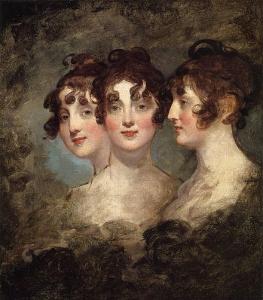
She was an American socialite and the daughter of a Baltimore merchant and the first wife of Jérôme Bonaparte, Napoleon‘s youngest brother. Their wedding ceremony was presided over by none other then the first Catholic bishop of America John Carroll.

There is the connection between the Carrols and Bonapartes.
Elizabeth and Jerome Begat Jérôme Napoleon Bonaparte (July 5, 1805 – June 17, 1870). He became an american farmer, chairman of the Maryland Agricultural Society and the first president of the Maryland Club.

Jerome (July 5, 1805 – June 17, 1870) married Susan May Williams (April 2, 1812 – September 15, 1881) and they begot
Jerome Napoleon Bonaparte II (1830–1893), who served as an officer in the armies of both the United States and France,

and Charles Joseph Bonaparte (1851–1921), who became the United States Attorney General and Secretary of the Navy,

Jérôme and his second wife Catharina of Württemberg begot
Prince Napoléon Joseph Charles
Paul Bonaparte
(September 9, 1822 – March 17, 1891),
Following the death of his nephew Louis-Napoléon, Prince Imperial in 1879, he claimed headship of the House of Bonaparte until his death in 1891. An outspoken liberal however, he was passed over as heir in his cousin’s final will, instead choosing his elder son Victor, who was favored by most Bonapartists. From the 1880s he was one of the stronger supporters of General Georges Boulanger, together with other monarchist forces.
Victor, Prince Napoléon,
titular 3rd Prince of Montfort
(July 18, 1862 – May 3, 1926)
He was the Bonapartist pretender to the French throne from 1879 until his death in 1926. He was known as Napoléon V by those who supported his claim and son of Prince Joseph Bonaparte.
John Hancock’s Descendents
John Hancock
January 23, 1737 – October 8, 1793)
He was an American Founding Father, merchant, statesman, and prominent Patriot of the American Revolution. He was the longest-serving president of the Continental Congress, having served as the second president of the Second Continental Congress and the seventh president of the Congress of the Confederation. He was the first and third governor of the Commonwealth of Massachusetts. He is remembered for his large and stylish signature on the United States Declaration of Independence, so much so that in the United States, John Hancock or Hancock has become a colloquialism for a person’s signature. He also signed the Articles of Confederation, and used his influence to ensure that Massachusetts ratified the United States Constitution in 1788.

He was the Brother of
Mary (Hancock) Perkins (1735-1779) who was the mother of
his niece Lucy Hancock (Perkins) Spear (1775-1810) who was the mother of
his great nephew John Hancock Spear (1809-1884) who was the father of
his great great nephew Samuel Perkins Spear (1834-1918)
Sam started his own business selling stoves and other tinning or tile services.
Patrick Henry’s Descendents
Patrick Henry
(May 29, 1736 – June 6, 1799)
He was an American politician, planter and orator who declared to the Second Virginia Convention (1775): “Give me liberty, or give me death!” A Founding Father, he served as the first and sixth post-colonial Governor of Virginia, from 1776 to 1779 and from 1784 to 1786.

Together with his second wife Dorothea Dandridge Henry (September 25, 1757 – February 14, 1831), they were the parents of
John Henry (1796-1868)
+ Elvira Bruce (McClelland) Henry (1808-1875)
= Emma Cabell (Henry) Ferguson (1838-1905) (Granddaughter)
Beethoven’s Brother’s Sons
Ludwig van Beethoven
(baptised December 17, 1770 – March 26, 1827)
He was a German composer and pianist. He is one of the most revered figures in the history of Western music; his works rank among the most performed of the classical music repertoire and span the transition from the Classical period to the Romantic era in classical music.
He was almost completely deaf by 1815, and he then gave up performing and appearing in public. He described his problems with health and his unfulfilled personal life in two letters, his Heiligenstadt Testament (1802) to his brothers and his unsent love letter to an unknown “Immortal Beloved” (1812).

He is the brother of
Caspar Anton Carl van Beethoven (1774-1815)
He is the Father of
Karl van Beethoven (1806-1858)- (Beethoven’s Nephew)
He is the Father of
Ludwig Johann van Beethoven (1839-c.1890) (Beethoven’s Great Nephew)
The General Society of Mayflower
Descendants Founder
Capt Richard Henry Green (1839-1926)
Richard Greene is the originator, number 1, of the Society of Mayflower Descendants in 1894;
— commonly called the Mayflower Society — is a hereditary organization of individuals who have documented their descent from at least one of the 102 passengers who arrived on the Mayflower in 1620 at what is now Plymouth, Massachusetts. The Society was founded at Plymouth in 1897.
Descendents of Daniel Boone
Daniel Boone
(November 2, 1734 – September 26, 1820)
He was an American pioneer and frontiersman whose exploits made him one of the first folk heroes of the United States. He became famous for his exploration and settlement of Kentucky, which was then beyond the western borders of the Thirteen Colonies. In 1775, Boone blazed the Wilderness Road through the Cumberland Gap and into Kentucky, in the face of resistance from Native Americans. He founded Boonesborough, one of the first English-speaking settlements west of the Appalachian Mountains. By the end of the 18th century, more than 200,000 emigrated people had entered Kentucky by following the route marked by Boone.

Daniel Boone was the father of
Daniel Morgan Boone (1769-1839) who was the father of
Daniel Morgan Boone III (1809-1880) who was the father of
Napoleon Boone (1842-1923) who was 47 in 1889.
William Clark’s Grandson
William Clark (August 1, 1770 – September 1, 1838)
He was an American explorer, soldier, Indian agent, and territorial governor. A native of Virginia, he grew up in pre-statehood Kentucky before later settling in what became the state of Missouri.
Along with Meriwether Lewis, Clark led the Lewis and Clark Expedition of 1804–1806 across the Louisiana Purchase to the Pacific Ocean, the first major effort to explore and map much of what is now the Western United States and to assert American claims to the Pacific Northwest.

He was the father of
Meriwether Lewis Clark Sr.
(January 10, 1809 – October 28, 1881)
He was an architect, civil engineer and politician. He was also a military officer in the Mexican–American War and the American Civil War.

He was the father of
Meriwether Lewis ‘Lutie’ Clark, Jr. (1846 – 1899)
He is best known as the founder of the Louisville Jockey Club and the builder of Churchill Downs, where the Kentucky Derby is run.

Descendents of Alexander Hamilton
Alexander Hamilton
(January 11, 1755, or 1757 – July 12, 1804)
He was an American military officer, statesman, and Founding Father who served as the first secretary of the treasury from 1789 to 1795 during George Washington’s presidency.

Alexander Schuyler Hamilton
(September 9, 1847 – June 3, 1928)
He was an American Episcopal priest and great-grandson of Alexander Hamilton,
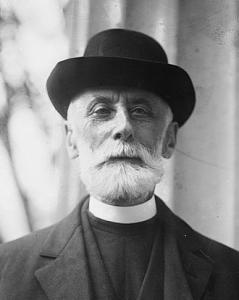
Alexander Hamilton,
+ Elizabeth Schuyler Hamilton
= Philip Hamilton
(June 2, 1802 – July 9, 1884)
He was the first U.S. Secretary of the Treasury and one of the Founding Fathers of the United States. He was named in memory of his oldest brother, also Philip Hamilton.
Philip was the father of
Allan McLane Hamilton FRSE
(October 6, 1848 – November 23, 1919)
He was an American psychiatrist, specializing in suicide and the impact of accidents and trauma upon mental health, and in criminal insanity, appearing at several trials.
He was a founder of the New York Psychiatrical Society. He was a Professor of Psychiatry at Cornell Medical College in New York. He was the grandson of Louis McLane on his mother’s side and Alexander Hamilton on his father’s side, and in 1910, he wrote The Intimate Life of Alexander Hamilton, a biography of his grandfather.[
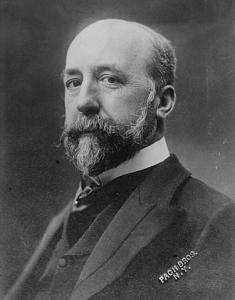
Descendents of Paul Revere
Paul Revere
December 21, 1734 – May 10, 1818)
He was an American silversmith, military officer and industrialist who played a major role during the opening months of the American Revolutionary War in Massachusetts, engaging in a midnight ride in 1775 to alert nearby minutemen of the approach of British troops prior to the battles of Lexington and Concord.
Born in the North End of Boston, Revere eventually became a prosperous and prominent Bostonian, deriving his income from silversmithing and engraving. During the American Revolution, he was a strong supporter of the Patriot cause and joined the Sons of Liberty. His midnight ride transformed him into an American folk hero, being dramatized in Henry Wadsworth Longfellow‘s 1861 poem, “Paul Revere’s Ride“. He also helped to organize an intelligence and alarm system to keep watch on the movements of British forces. Revere later served as an officer in the Massachusetts Militia, though his service ended after the Penobscot Expedition, one of the most disastrous American campaigns of the American Revolutionary War, for which he was absolved of blame.
Following the war, Revere returned to his silversmith trade. He used the profits from his expanding business to finance his work in iron casting, bronze bell and cannon casting, and the forging of copper bolts and spikes. In 1800, he became the first American to successfully roll copper into sheets for use as sheathing on naval vessels.

He was the father of
Dr John Revere
30 Apr 30, 1847 (aged 60)
He was the father of
Joseph Warren Revere.
(May 17, 1812 – April 20, 1880)
He was a career United States Navy and Army officer. He was the grandson of American Revolutionary War figure Paul Revere.
He was an amateur artist and autobiographer, publishing two novels: A Tour of Duty in California (1849) and Keel and Saddle (1872). Both novels include memoirs of his experience traveling in the military. He was involved in the African Slave Trade Patrol, the Second Seminole War, the Mexican-American War, and the Civil War.
He was heavily involved in the 1845-1846 Conquest of California, wherein American troops invaded Alta California. Afterwards, he created a plantation in Rancho San Geronimo (near San Francisco, California), which used forced labor of Coast Miwok workers.
During the American Civil War, Revere was a Union brigadier general who was court-martialed after the 1863 Battle of Chancellorsville. Revere challenged the court-martial and published multiple pamphlets in attempts to clear his reputation. In 1862, during the Civil War, Revere converted to Catholicism.
He completed several tours of duty, during which he travelled to Mexico, Cuba, Liberia, France, Germany, Greece, Egypt, Portugal, Spain, Algeria, and Italy.
His 1854 Gothic Revival mansion is historically preserved for educational tours at Fosterfields Living Historical Farm in Morristown, New Jersey.
He was the father of
Paul Revere (lawyer)
(September 28, 1856 – November 10, 1901)
He was a lawyer, writer, public speaker, and civic member of Morristown, New Jersey. He was the great-grandson of American revolutionary figure Paul Revere, and his father was
Mozart’s Last Decedents
Karoline Grau (née Mozart)
(1885 – 1965)
The last known direct descendant of the Mozart family was Karoline Grau (née Mozart), the great-great-grandniece of Mozart’s father Leopold, who died in 1965 at age 80. This is a photo of Karoline circa 1955. If you compare this image with the 1856 daguerreotype of Mozart’s eldest son Karl Thomas, the resemblance is clear. Neither of Mozart’s sons married or had children. Bertha Forschter (1842–1919), the great-granddaughter of Mozart’s sister Maria Anna, died in 1917. –Sherry Davis, Music Historian and Preservationist
The Mozart family













